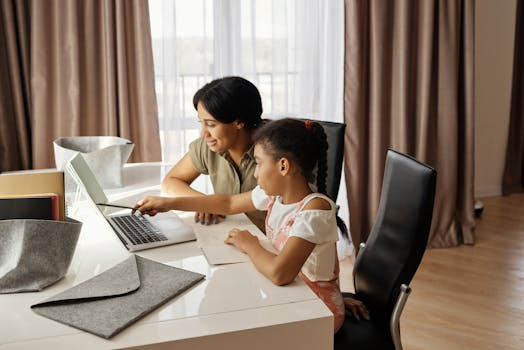Hybrid classrooms blending online and in-person learning
Welcome to the future of education – hybrid classrooms. With the advancement of technology, the traditional method of learning in a physical classroom has evolved into a hybrid model, blending online and in-person teaching. This modern approach allows for greater flexibility, customization, and efficiency in the learning process. In this article, we will explore the concept of hybrid classrooms and how it is revolutionizing the way we learn.
The Rise of Hybrid Classrooms
Hybrid classrooms, also known as blended learning, have gained popularity in recent years, especially in the wake of the COVID-19 pandemic. It involves a mix of in-person and online learning, providing the best of both worlds. Students have the opportunity to interact with their peers and teachers in a physical environment, as well as access to a wide range of online resources and tools to enhance their learning experience.
The Benefits of Hybrid Learning
The flexibility of hybrid classrooms allows students to learn at their own pace and schedule, making it ideal for those with busy schedules or learning difficulties. It also caters to different learning styles, as students can choose the mode of learning that best suits them. For example, some may prefer the traditional classroom setting, while others may find online resources and interactive platforms more engaging.
Moreover, hybrid learning encourages self-directed learning, as students are required to take more responsibility for their education. They are given the freedom to explore various topics and resources, ultimately developing critical thinking and problem-solving skills.
The Role of Technology in Hybrid Classrooms
The success of hybrid classrooms would not be possible without technology. Online platforms, such as learning management systems and video conferencing tools, provide a seamless learning experience for students and teachers. These platforms allow for effective communication and collaboration, even in a remote setting.
Furthermore, technology enables teachers to personalize the learning experience for their students. Through online assessments and data tracking, teachers can identify each student’s strengths and weaknesses and tailor their teaching accordingly.
The Impact on Education
The integration of hybrid classrooms in education has brought about significant changes. It has paved the way for a more inclusive and accessible education system. Students from different backgrounds, with varying learning abilities, can now learn together in the same class, leading to a more diverse and dynamic learning environment.
Hybrid learning has also opened up opportunities for lifelong learning. With the vast array of online courses and resources available, individuals can continue learning and upskilling throughout their lives, regardless of their age or location.
Overcoming Challenges
As with any new concept, hybrid classrooms have faced some challenges. One of the main concerns is the digital divide, where not all students have equal access to technology and high-speed internet. This issue must be addressed to ensure equity and fairness in education.
Another challenge is the need for proper training and support for teachers to effectively integrate hybrid learning into their teaching methods. This will ensure that students receive a quality education and have a positive learning experience.
The Future of Education
Hybrid classrooms have already proven to be a game-changer in education, and it is set to continue this trend in the future. With the constant advancements in technology, we can expect to see more innovative approaches to teaching and learning. The use of virtual and augmented reality, artificial intelligence, and other emerging technologies will further enhance the hybrid learning experience.
In conclusion, hybrid classrooms are here to stay, and they are shaping the future of education. By blending the best of online and in-person learning, this modern approach has positively impacted students’ learning outcomes and created a more inclusive and dynamic learning environment. As technology continues to evolve, we can expect to see further advancements in hybrid learning, providing endless possibilities for the future of education.










